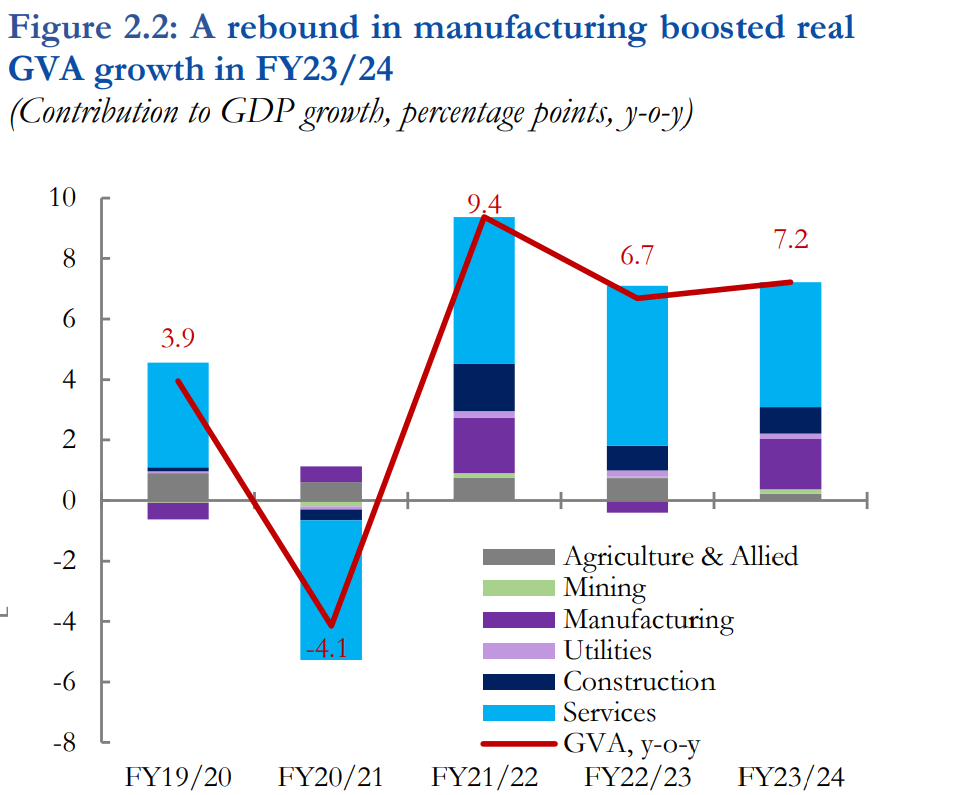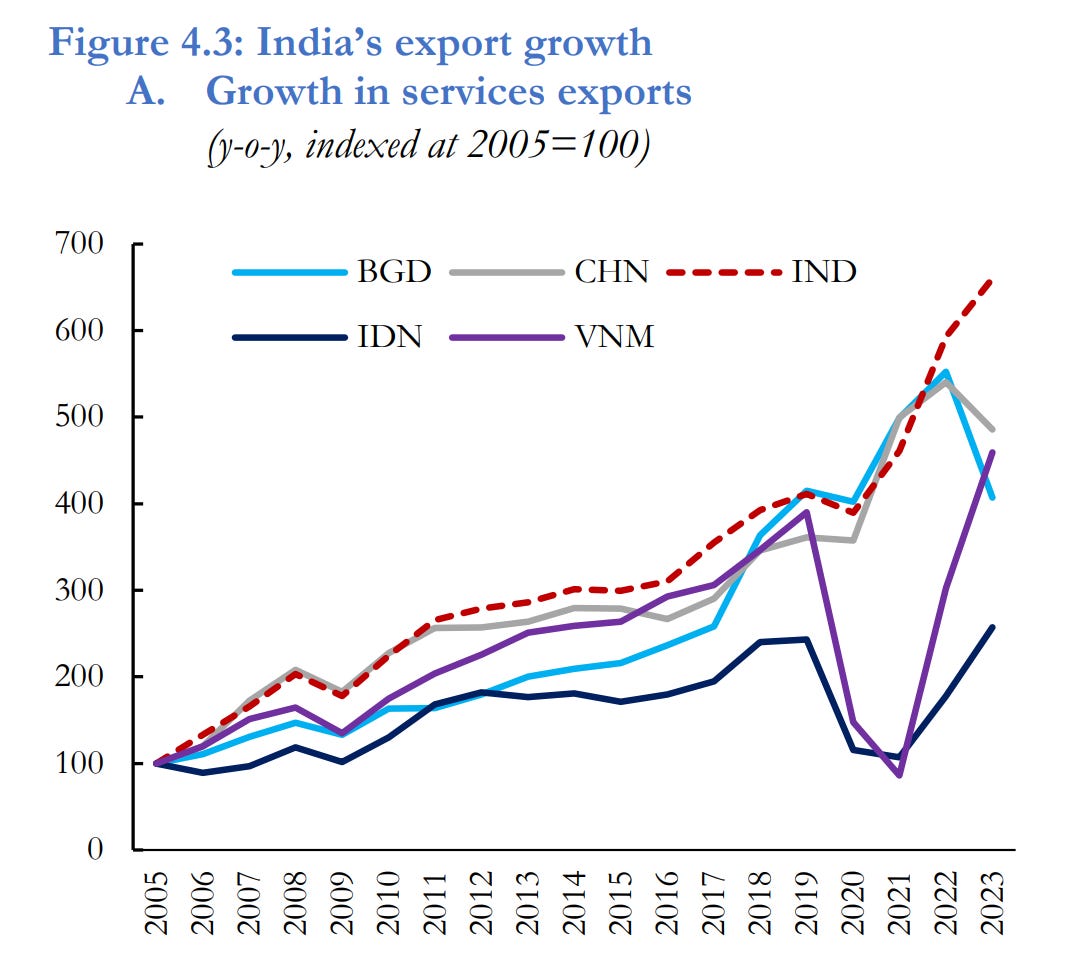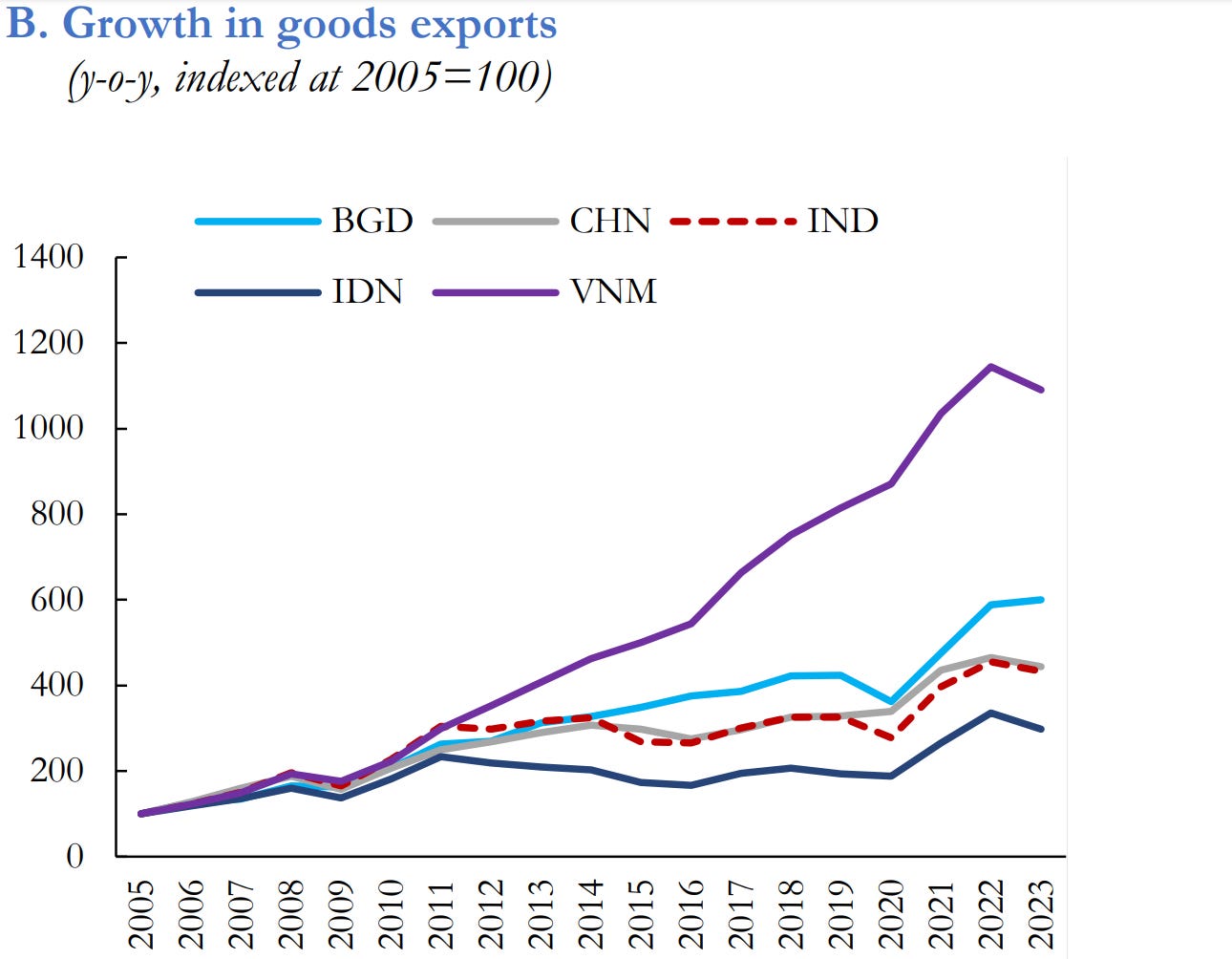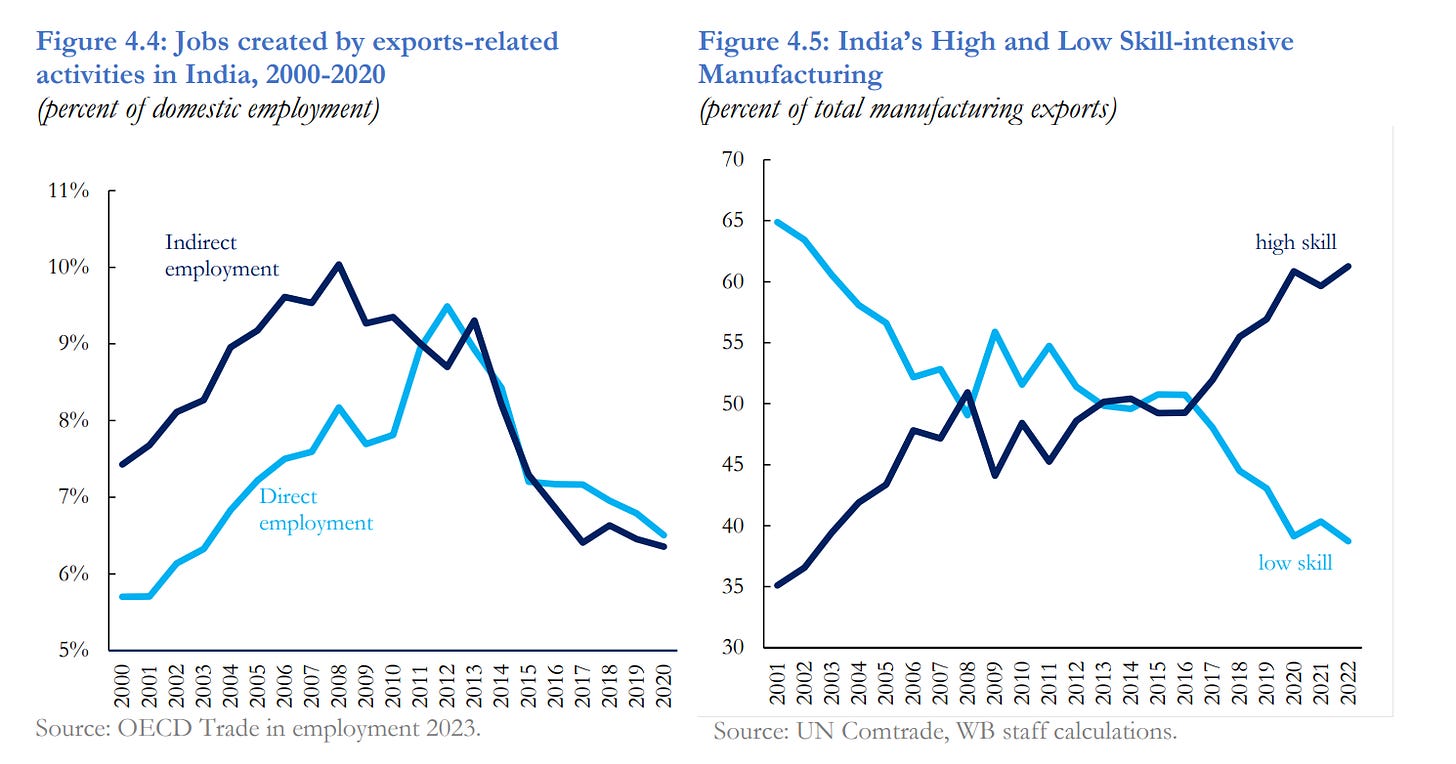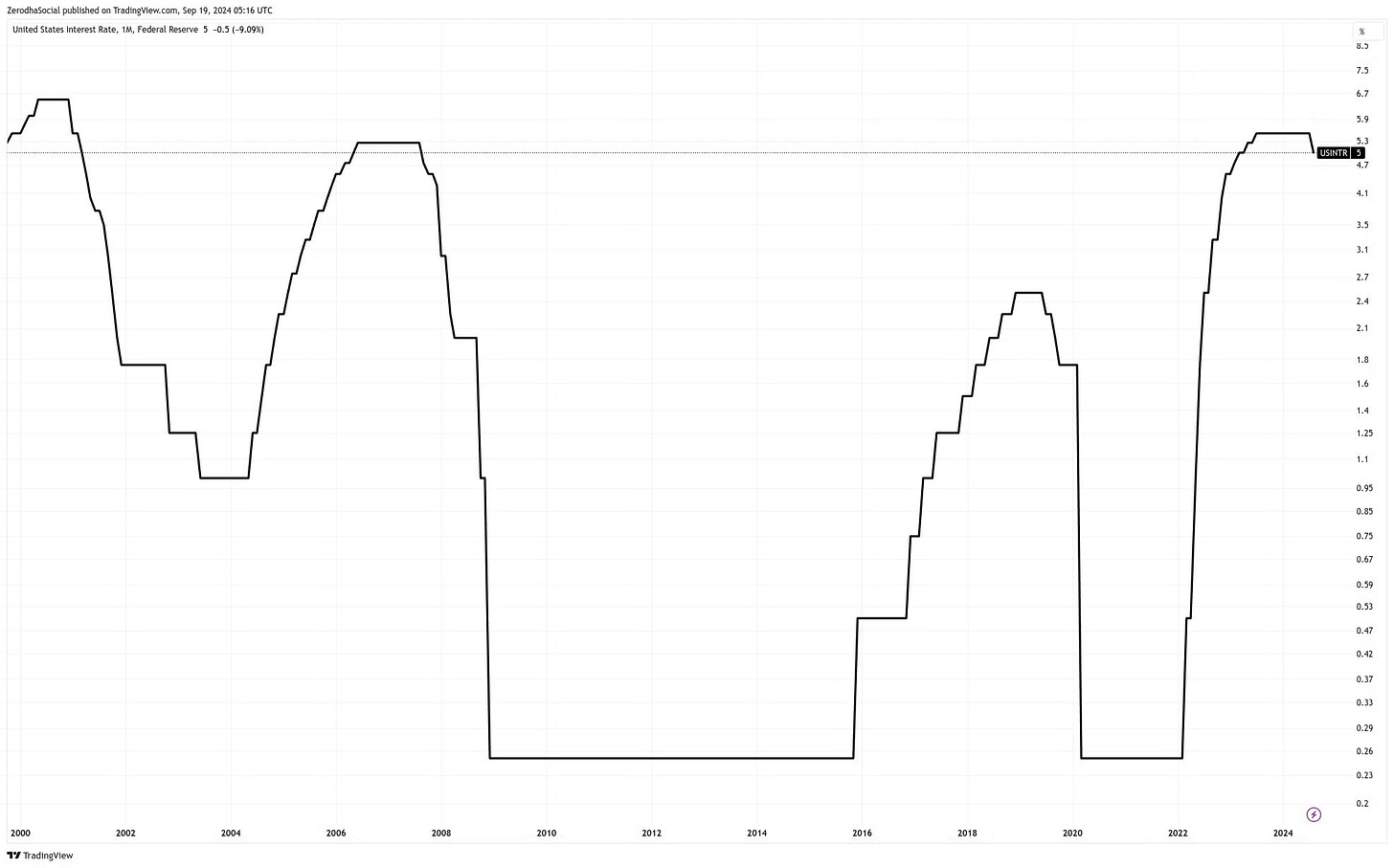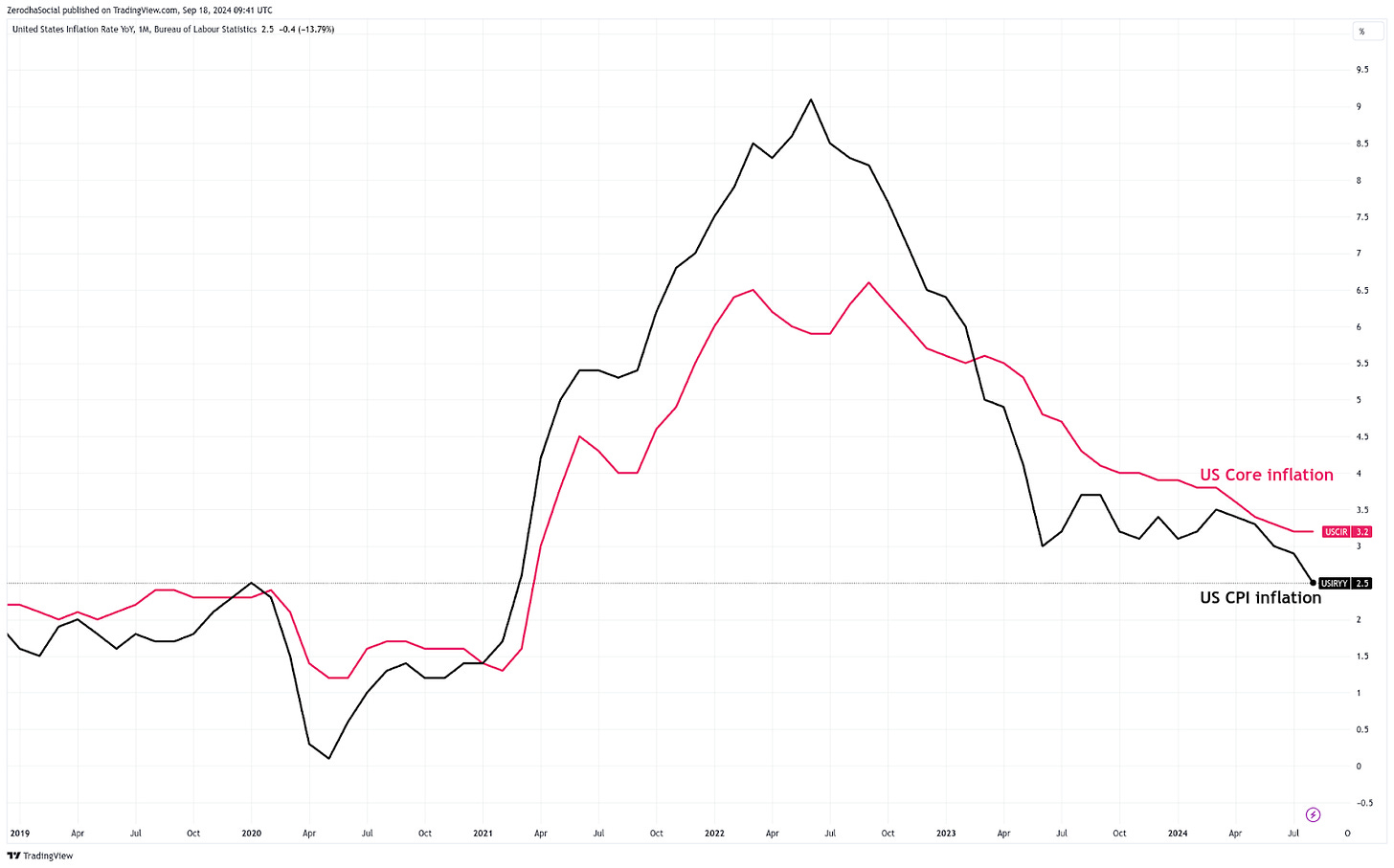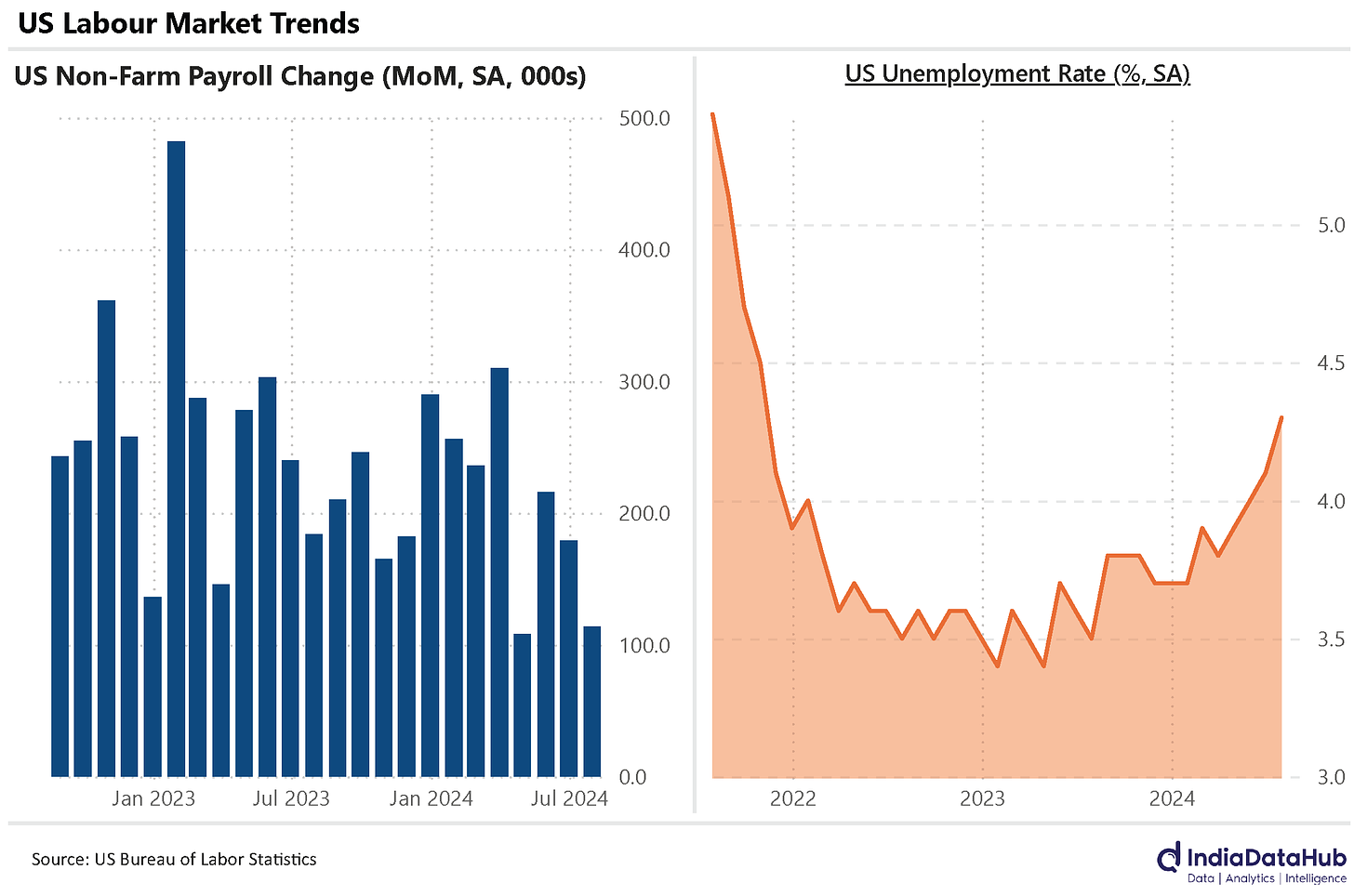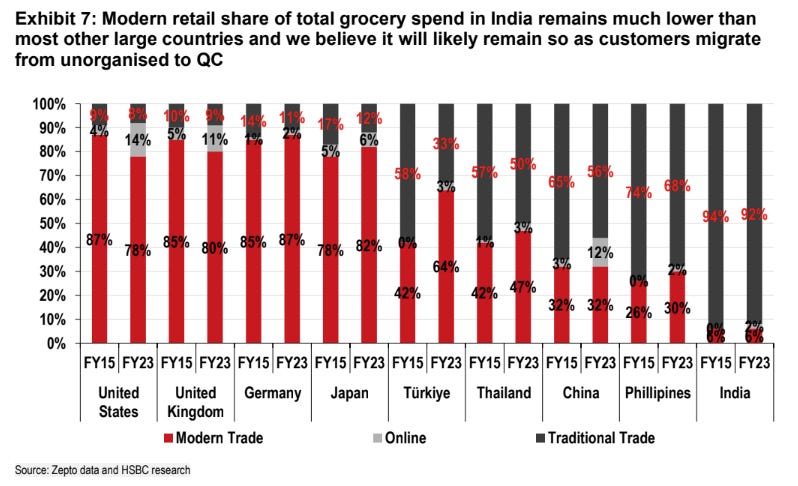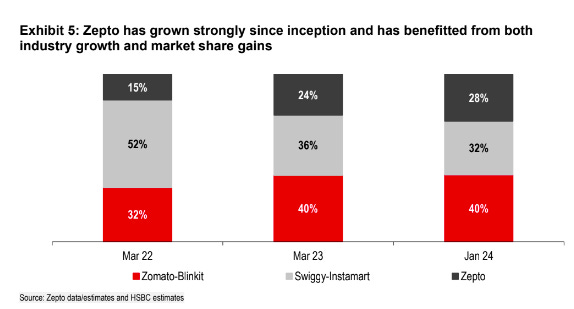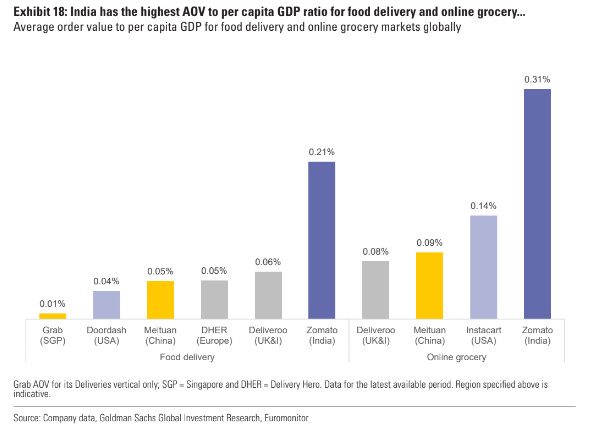We publish a new episode daily to help you understand the biggest stories in the Indian markets. But we understand that you may be busy and don’t have the time to listen to the daily episodes. So don’t worry; we’ve got you covered.
Every weekend, we publish an edition simplifying the biggest stories of the week so that you can still look smart in front of your friends.
You can listen to the podcast on Spotify, Apple Podcasts, or wherever you get your podcasts and video on YouTube.
If you have already listened to daily episodes of The Daily Brief, check out our other podcasts, The Big Perspective, Please help me understand! and The Bull & Bear Case.
In this edition, we recap:
- How’s the Indian economy doing?
- Fed cuts rates for the first time in 4 years
- Quick Commerce vs the Government
- India’s trade deficit
How’s the Indian economy doing?
The World Bank recently released its India Development Update, which gives a detailed overview of the Indian economy. We went through it so you don’t have to and have summed up the key points for you.
Let’s start with the good news. In the fiscal year 2023-24, India’s GDP grew by 8.2%, outpacing other major economies. This growth is reflected in India’s financial markets too. Indian equity markets hit all-time highs this year, with the total market value of India’s stock market now around $5 trillion. India’s share in the MSCI Emerging Markets Index also reached a new high at 20.5%.
One of the main drivers of India’s growth has been government investment. The central government increased its capital spending by 28%, focusing on infrastructure projects like roads, ports, and power plants. This push is helping to lay the foundation for future economic growth.
The manufacturing sector has also seen a big rebound. After shrinking by 2.2% last year, manufacturing grew by 9.9% in FY23/24. Lower input costs, especially thanks to lower global oil prices, helped fuel this growth. Sectors like construction and electronics have particularly benefited from public infrastructure investment and rising domestic demand.
India’s services sector, especially IT and finance, continues to be a strong part of the economy. Services grew by 7.6% in FY23/24, with IT and business services growing nearly 13% annually since 2000. These sectors now make up more than two-thirds of India’s services exports.
India’s services sector, especially IT and finance, continues to be a strong part of the economy. Services grew by 7.6% in FY23/24, with IT and business services growing nearly 13% annually since 2000. These sectors now make up more than two-thirds of India’s services exports.
However, not everything is rosy. Agriculture, which is vital for rural livelihoods, faced challenges. Growth in agriculture dropped to 1.4%, down from 4.7% the previous year. This drop was mainly due to unpredictable rainfall, showing how vulnerable the sector is to climate. However, this year’s monsoon looks promising, so there’s hope for a rebound.
The slowdown in agriculture has also affected the broader economy. Private consumption, which makes up about 60% of India’s GDP, fell to 4.0% in FY23/24 from 6.8% the previous year. Lower rural incomes have impacted household spending.
That said, consumption did pick up in the last quarter. Whether this is a temporary blip or the start of a strong recovery remains to be seen. High-frequency data points like air travel, car sales, and FMCG sales show that urban consumption is slowing down, while rural consumption is picking up. The overall impact on consumption growth is still uncertain.
On the inflation front, while overall inflation eased to an average of 5.4% in FY23/24, food inflation remained high at 8.9% in the first quarter of FY24/25, before dropping sharply to 5.4% in July 2024. These ups and downs are putting pressure on household budgets, especially for low-income families.
Looking ahead, India’s economic growth is projected to stay strong at 7.0% in FY24/25, despite a weaker global environment. A few key factors contribute to this positive outlook: the government’s big push in public investment, a possible recovery in agriculture, and easing inflation, which should boost private consumption. The services sector, especially IT and business services, also continues to show strong growth.
Looking even further, India is expected to double its current GDP of $3.5 trillion to $7 trillion by 2030, potentially becoming the world’s third-largest economy. This growth is supported by India’s favorable demographics.
India’s “demographic dividend” – the working-age population – is expected to last until at least 2055-56, peaking around 2041, when 59% of the population will be of working age. The middle class is also growing fast, with around a third of the population now falling into this category.
But there are challenges, especially when it comes to creating jobs. Despite strong economic growth, the connection between exports and job creation has weakened. Export-related jobs fell from 9.5% of total employment in 2012 to 6.5% in 2020. This disconnect is partly due to the nature of India’s exports.
India’s exports are increasingly moving towards more capital- and skill-intensive sectors like IT services and pharmaceuticals. While these sectors contribute significantly to economic growth, they don’t create as many jobs as labor-intensive industries.
To create more jobs, India needs to diversify its export basket to include more labor-intensive sectors like textiles, apparel, and footwear. These industries have traditionally provided significant employment, especially for women and less-skilled workers. However, India’s share of the global market in these sectors has been falling. For example, its share in global exports of apparel, leather, textiles, and footwear (ALTF) peaked at 4.5% in 2013 but dropped to 3.5% by 2022.
Meanwhile, countries like Bangladesh and Vietnam have been quicker to take advantage of global supply chain shifts. As China steps back from low-skill manufacturing, these countries have filled the gap. Bangladesh’s share in global ALTF exports rose to 5.1% in 2022, and Vietnam’s reached 5.9%. India has the potential to capture more of this market, which would boost both exports and job creation.
To seize this opportunity, India needs to address several challenges, including its trade policies. India has been leaning towards protectionism in recent years. The average Most Favored Nation tariff has risen to 18.1% in 2022, up from 13.4% in 2016. While these measures are aimed at protecting domestic industries, they might be slowing India’s integration into global value chains (GVCs). India’s participation in GVCs has been declining, with the use of imported inputs in exports dropping from over 25% in 2010 to about 15% in 2020. This reduces opportunities for technology transfer and job creation in export-oriented sectors.
Despite these challenges, India remains an under-allocated market for major Emerging Market portfolio managers compared to other countries, suggesting room for more foreign investment in the future.
To tackle these challenges and tap into new opportunities, India needs to:
- Diversify exports into more labor-intensive sectors while supporting high-skill industries.
- Lower trade barriers to improve competitiveness and integrate better into global value chains.
- Focus on skills development to prepare the workforce for both labor- and skill-intensive jobs.
- Improve logistics and trade facilitation to reduce export costs.
- Rethink trade agreements and regional partnerships to expand market access.
Considering the progress India has made, we are optimistic that the country can continue to grow at a healthy pace.
How does the fed rate cut affect India?
A few weeks ago, Jerome Powell, the head of the US Federal Reserve, hinted that they might be cutting interest rates soon. He said, “The time has come for policy to adjust,” which was basically a soft signal that a Fed rate cut could be on the horizon. And the Fed did just that at its meeting on Wednesday by cutting the interest rates by 0.5%.
We’ve talked about Fed rate cuts and inflation quite a bit on this show, so you probably have a rough idea why decisions like this are such a big deal—not just for the US but for the rest of the world, including us here in India. So today, we’re diving deeper into what’s been going on in the US and how their decisions are affecting the rest of the world, especially India.
Since early 2021, inflation has been a big problem for the US. The pandemic disrupted global supply chains, making it harder for companies to get what they needed. At the same time, demand for goods shot up as businesses and people tried to bounce back. To make things more intense, the government pumped a lot of money into the economy to help, which boosted spending even more. With high demand and low supply, prices went up—classic inflation.
To fight this, the Fed started raising interest rates in 2022 and 2023. The idea was to make borrowing more expensive, so people and businesses would spend less, which should bring down inflation. And it worked, but only to a point. While inflation eased up, other parts of the economy, like job growth, started slowing down.
To understand why, we need to look at what happens when the Fed cuts interest rates. When the Fed cuts rates, borrowing becomes cheaper. For businesses, it means they can borrow money at lower costs, which encourages them to invest and grow. For regular people, it means things like mortgages, car loans, and credit card debt get a bit cheaper, so spending tends to pick up. And more spending gives the economy a boost.
But there’s a flip side, which is important for us in India. When the Fed cuts rates, it can weaken the US dollar. This actually works in favor of emerging markets like India because we often borrow in US dollars. A weaker dollar makes it cheaper for us to pay off those debts.
Now, this rate-cut cycle is different from past ones, like what we saw in 2000 and 2008. In the early 2000s, corporate debt, especially in the tech sector, played a big role in the dot-com bubble. The Fed raised rates in 1999 to cool down the economy, which contributed to the bubble bursting. Then, the Fed cut rates to stabilize the markets.
In 2008, it was housing debt that triggered the financial crisis. Years of low rates led to massive borrowing in the housing market, especially in risky subprime mortgages. When that bubble burst, the Fed slashed rates aggressively to prevent an economic collapse.
But today’s situation is different. US households and businesses aren’t carrying as much debt as they were during those past cycles. Household debt, especially mortgage debt, is more manageable, and businesses aren’t as highly leveraged as they were in 2000. That’s why this cycle feels unique. Even if the Fed cuts rates today, we’re not facing the same financial issues as before.
The big question for us is—how does this affect India?
India’s central bank, the RBI, keeps a close eye on the Fed’s actions. While the RBI sets rates based on our economy, there’s often a ripple effect from what the Fed does. So, when the Fed cuts or raises rates, the RBI may follow suit.
This impacts Indian markets, including stocks, bonds, and even the rupee. These markets react strongly to changes in US monetary policy. If the Fed cuts rates, Indian assets—especially sectors that rely on global capital—can get a positive boost.
To wrap it up, while it’s tempting to look at past rate cuts for clues about the future, the global economy is very different today. There’s less private debt in the US, inflation is higher, and we’re still dealing with the aftermath of the pandemic. So, predicting how markets will react this time is tricky.
Quick Commerce vs the Government
Quick commerce is becoming a huge part of how we shop these days. In fact, it’s growing so fast that it now makes up about 5-6% of what households spend on groceries, according to estimates from the Economic Times. This growth is not only changing the way we shop—it’s also grabbing the government’s attention.
The government is keeping a close eye on quick commerce. They’re analyzing data from platforms like Zepto, Blinkit, Instamart, and BigBasket to see what people are buying and how often they’re buying.
Why, you ask?
Well, quick commerce really took off after the pandemic and now makes up about 40% of all online grocery sales in the country. According to ET, the government is even thinking about using this quick commerce data to help calculate the country’s GDP and track economic growth! This data could give a clearer picture of how people are spending their money in today’s fast-paced world where online shopping is becoming the new normal.
By the way, if you want to dive deeper into this topic, check out our episode titled “Who will win the quick commerce wars?”.
Another thing the government is looking into is “dark stores.” In simple terms, dark stores are small warehouses set up in busy neighborhoods to make those super-fast deliveries possible. Recently, senior government officials met with an executive from a leading quick commerce company to understand how these dark stores work, especially when it comes to India’s foreign investment rules.
If you’ve been following the news, you might remember when Piyush Goyal made some sharp comments about Amazon. He criticized the company for trying to find loopholes in India’s foreign investment rules. Mr. Goyal argued that these kinds of practices hurt smaller businesses and disrupt fair competition by giving big companies like Amazon an unfair advantage.
Now, with quick commerce booming, the government wants to make sure that companies like Zepto and Blinkit aren’t doing the same thing. They’re keeping a close watch to see how these companies are setting up and managing their dark stores to ensure no one is bending the rules.
That’s the main government story, but while we’re talking about quick commerce, here are some new updates in this space:
- Flipkart just launched its 10-minute delivery service, Minutes. They’re now in a race against Zepto, Swiggy’s Instamart, and Zomato’s Blinkit. Flipkart plans to open up to 100 dark stores before the festive season kicks off, so they’re very optimistic about this space.
- The ex-CEO of Cleartrip is starting a new venture focused on quick deliveries of premium products.
- Zepto is rolling out something called SuperSaver, a feature aimed at budget-conscious shoppers who like to buy in bulk. They hope this will increase the average order value.
- Myntra is joining the quick commerce game with a 4-hour delivery service, bringing the concept to fashion, a category that has very high return rates.
- Blinkit and Zepto are experimenting with quick returns and exchanges for fashion e-commerce, hoping to make the customer experience smoother and faster.
- BigBasket, known for its scheduled delivery slots, is heavily investing in quick commerce. They plan to increase their dark store count from around 400 to 700 by FY25.
A big reason for all this buzz around quick commerce right now is the upcoming festive season, when sales tend to skyrocket across categories.
So, with the rapid growth of quick commerce, the lines between it and traditional e-commerce are blurring fast. But even with all this progress, quick commerce still has a long way to go.
India’s trade deficit
India’s trade deficit, which is the gap between what we import and export, recently widened to its highest level in ten months! In August 2024, this deficit hit around $30 billion, mainly because of a surge in gold imports and a drop in exports. For some context, economists expected the deficit to be around $23 billion, so $30 billion is about one-third higher than predicted.
At first glance, this might sound pretty alarming. But it’s not as bad as it seems. Let me explain why.
The trade deficit we’re talking about here is specifically the merchandise trade deficit, which only covers physical goods and doesn’t include services. If we factor in services, where India has a $15 billion surplus, the overall trade picture looks much better.
Still, there’s something interesting going on here that’s worth understanding, especially from an investor’s point of view. Let’s break down why gold imports have jumped, why exports are falling, and how the global economy is affecting India’s trade situation. I’ll also touch on what this deficit means for India’s economic strategy and what could be done about it.
Why is the merchandise deficit growing?
- Rise in Gold Imports: The biggest factor driving the deficit is gold. Gold imports shot up to over $10 billion, which is three times the monthly average earlier this year. This spike happened because of a recent cut in import duties on gold from 15% to 6%. Plus, with the festive season coming up, traders are stocking up on gold while prices are low. The good news is that if August saw a big surge in gold imports, they might level off in the coming months.
- China’s Economic Slowdown: China’s economy is struggling, which means its domestic consumption has slowed down a lot. As a result, China is exporting more goods at very low prices, flooding global markets. These cheap Chinese goods make it tough for Indian manufacturers to compete, putting pressure on our exports.
- Global Supply Chain Disruptions: Disruptions in global supply chains have pushed up freight costs, especially because of problems around the Red Sea and the Suez Canal. Normally, this route is a shortcut between Asia, Europe, and the US. But with these disruptions, ships are taking longer routes around Africa, which adds time and costs, affecting Indian exporters.
How can this be addressed?
These issues are complex, but there are a few ways that could help:
- Boost Domestic Production: The best long-term solution to tackle the trade deficit is to strengthen domestic manufacturing. The government has been pushing initiatives like Make in India and the Production Linked Incentive (PLI) scheme and investing heavily in logistics. If the deficit persists, it might be time to rethink our approach to manufacturing and trade policies more broadly.
- Leverage Our Services Surplus: India’s strength in services, especially with our Global Capacity Centres, can help balance out our merchandise deficits. Increasing service exports is a great way to bring more money into the country and manage the overall trade balance better.
- Attract More Foreign Investment: Another way to boost our balance of payments is by attracting more foreign investment. Although many countries are looking for alternatives to China, foreign investment into India has been falling. Drawing more of this investment can provide immediate benefits to our economy and strengthen our manufacturing ecosystem in the long run.
To conclude, while news of India’s widening trade deficit might sound concerning, it’s crucial to keep the bigger picture in mind. Our strong foreign reserves, which are at their highest levels ever, also provide a buffer against short-term shocks. So, while the numbers might look worrying, we have the tools and potential to navigate through this challenge.
That said, the key to long-term stability lies in improving India’s overall trade economy. The last severe balance of payments crisis we faced was back in the 1990s, and the solution then was to open up and liberalize the economy. While the current situation isn’t as severe, there might still be some valuable lessons we can learn from that experience.
That’s it from us for this week. Thank you for reading. Do share this with your friends and make them as smart as you are ![]()
If you have any feedback, do let us know in the comments.


